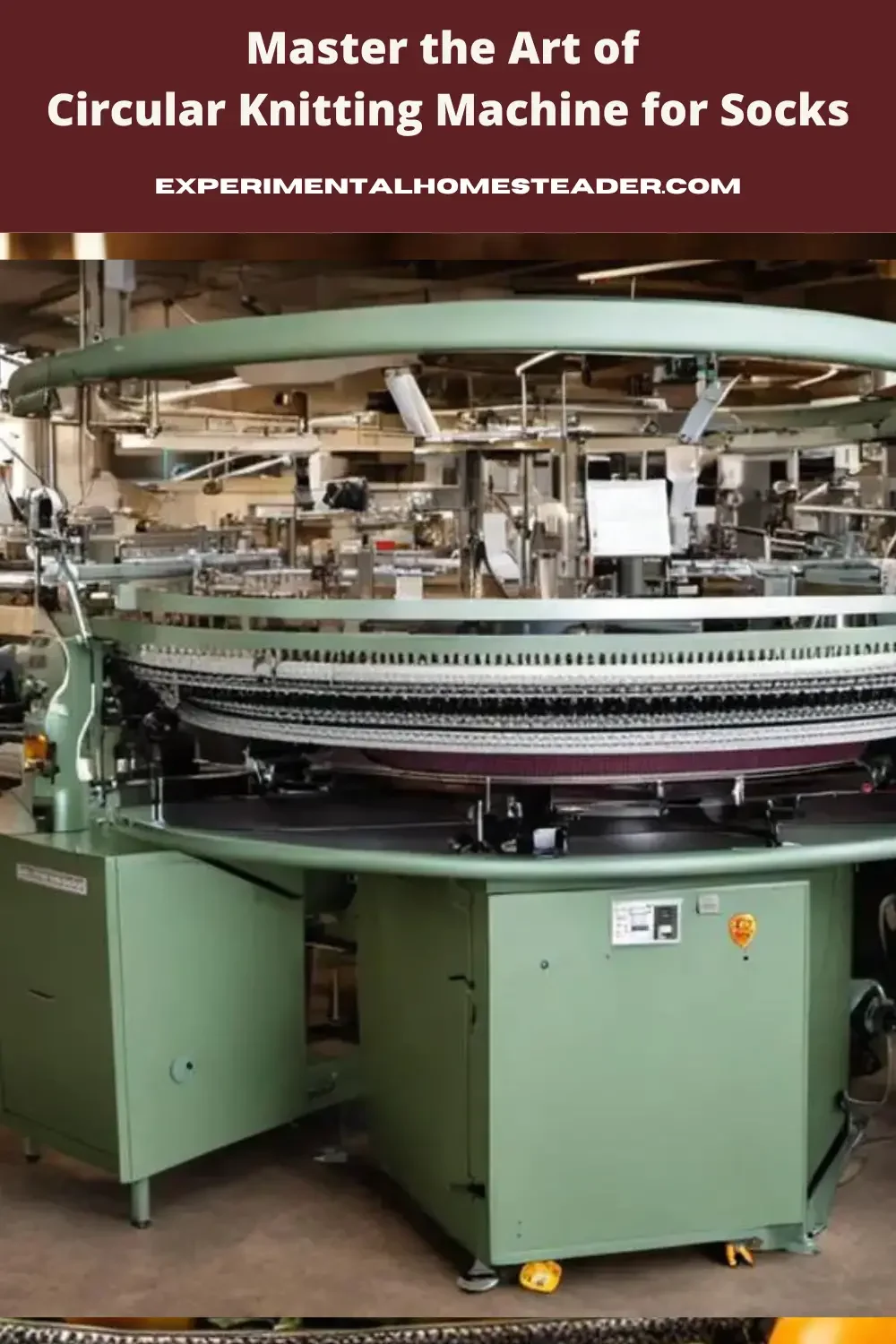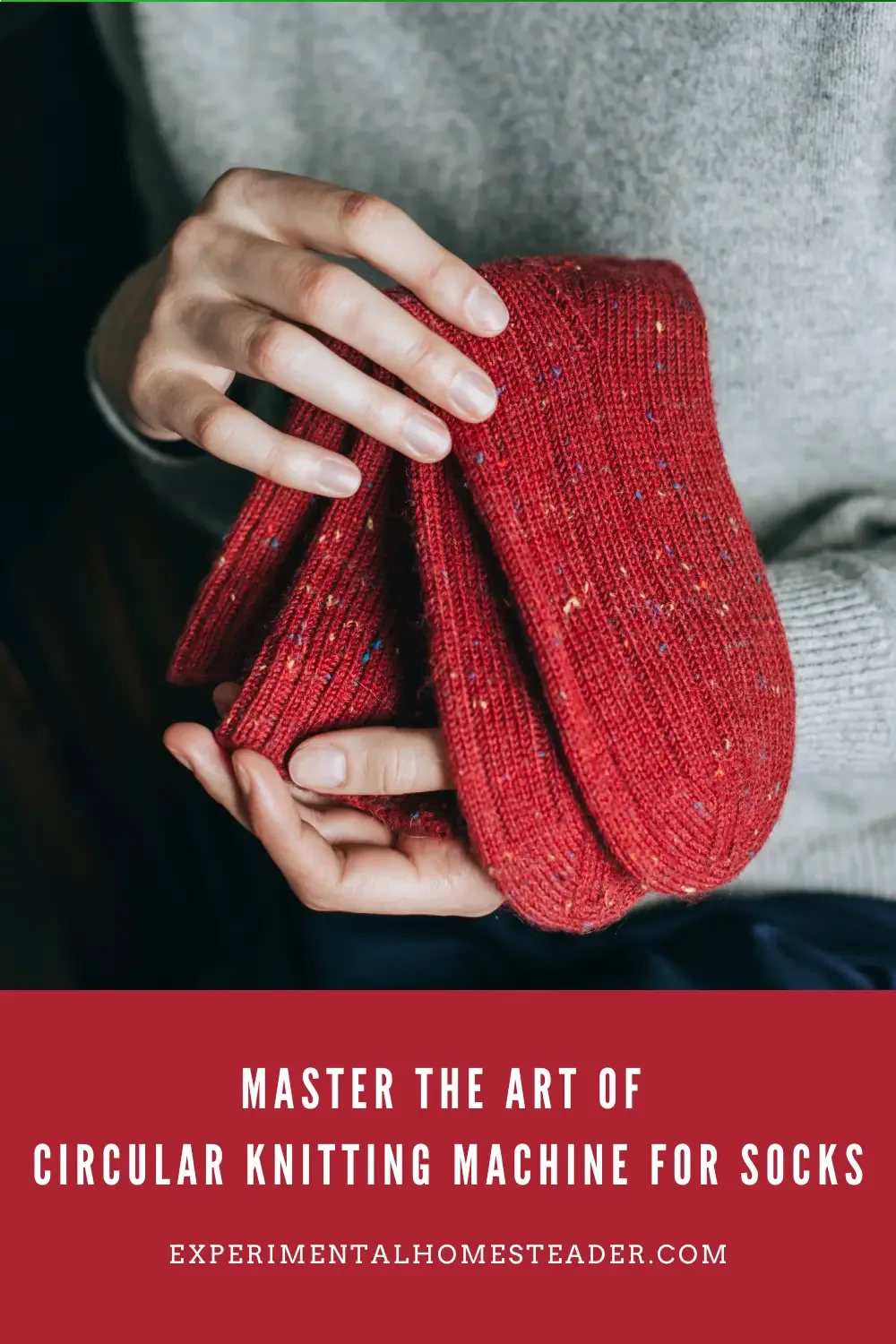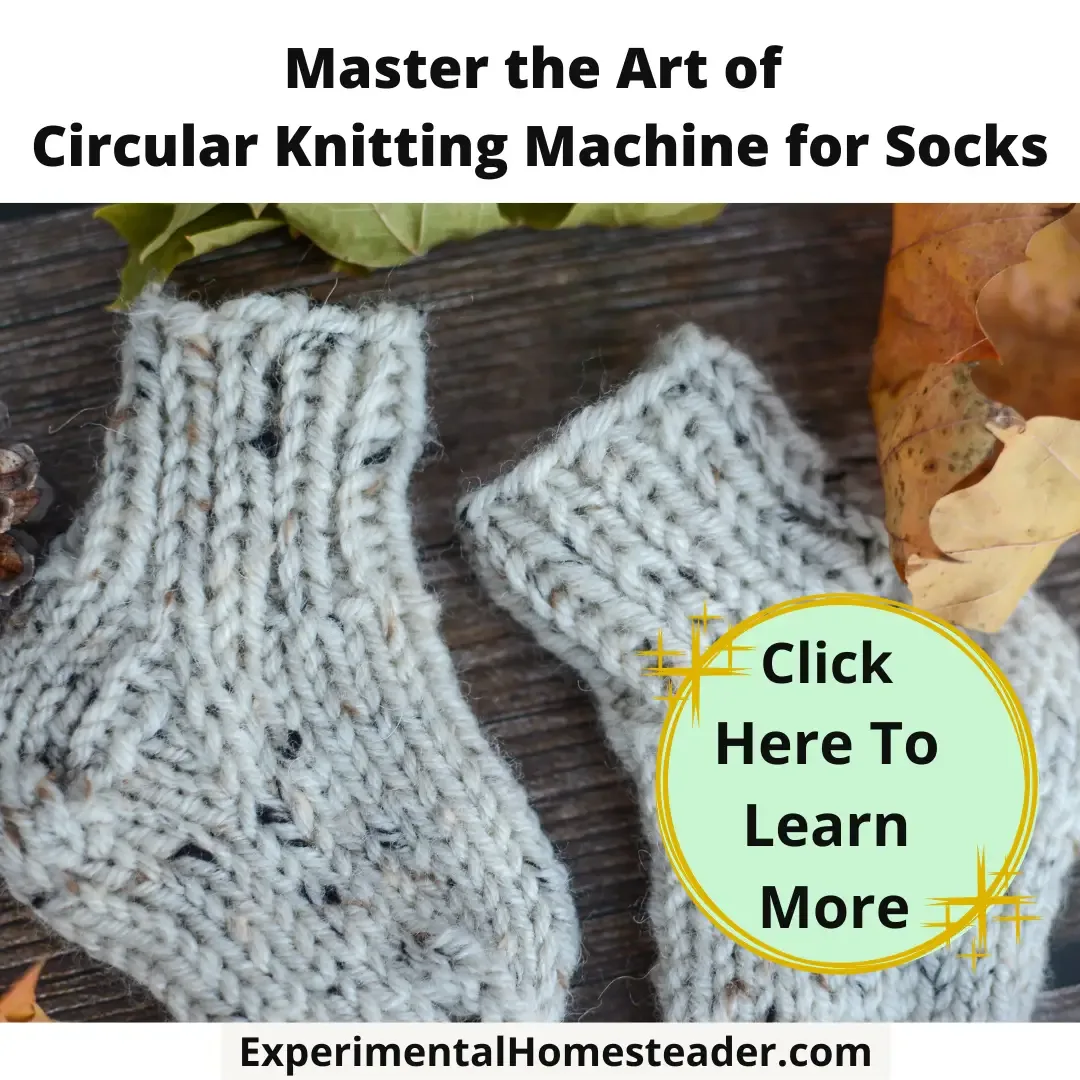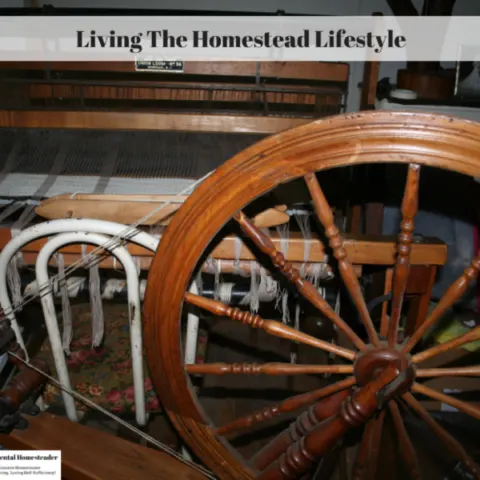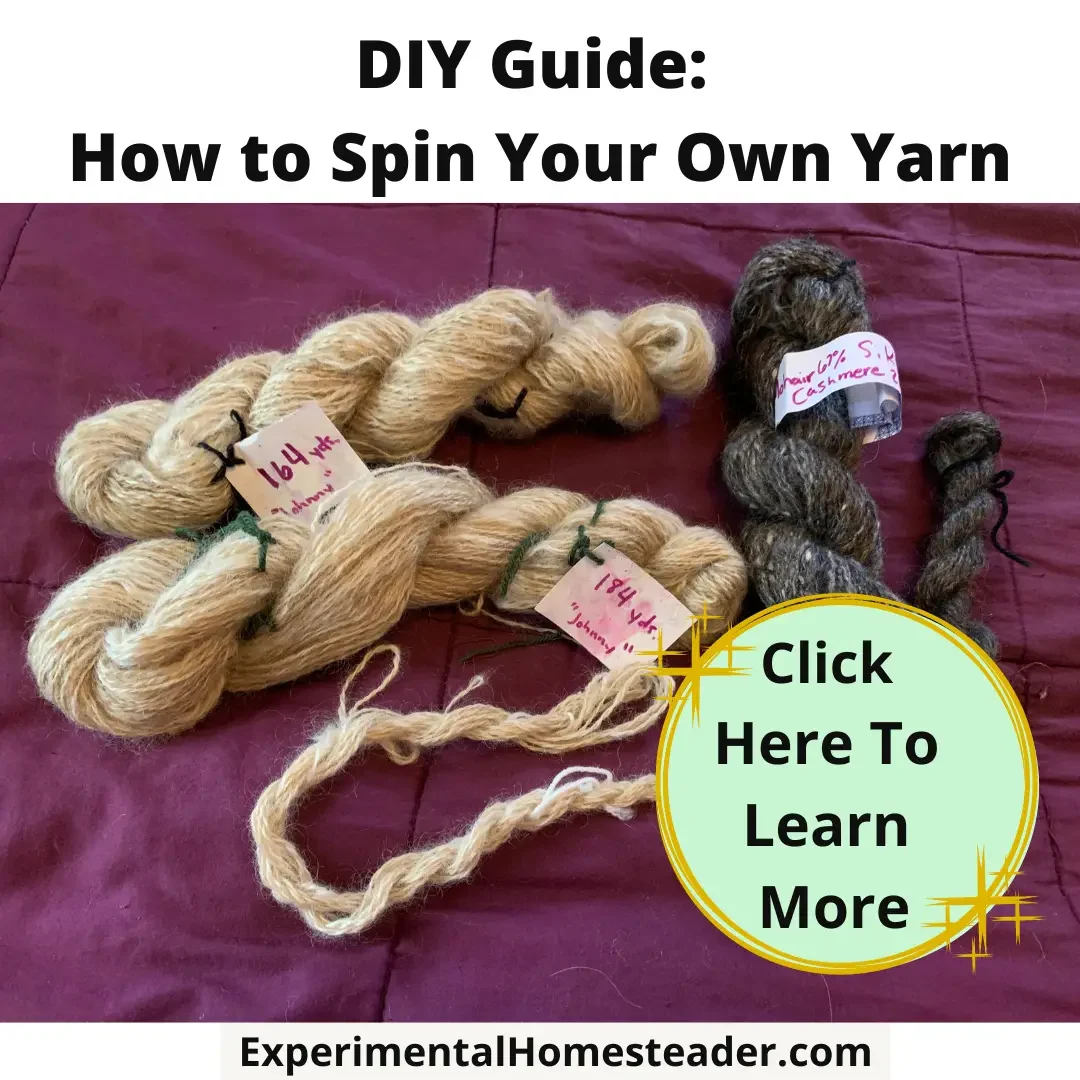Embarking on the journey of making your own socks can be thrilling, creative, and rewarding.
Thanks to the evolution of circular sock knitting machines, this pastime has transformed into a more accessible and fulfilling craft.
The ingenious mechanics of these specialized machines simplify the once complex process of sock knitting, making it approachable for enthusiasts of all levels.
It’s remarkable how these devices have opened up new avenues for creativity and skill development.
Whether you’re navigating the maze of machine options, diving into the basics, or venturing into advanced techniques and inspiring projects, this comprehensive guide is your companion on this exciting knitting voyage.
Let’s unravel the fascinating world of circular sock knitting machines, and discover how they can magically transform a simple skein of yarn into a wearable piece of art, snugly wrapped around your feet.
Understanding Circular Sock Knitting Machines
Embarking on the journey of the world of knitting unveils a plethora of mechanisms, from the simple to the sophisticated, each encapsulating an enthralling array of possibilities.
Of all these treasures, perhaps there’s no greater joy to a knitting enthusiast than mastering the Circular Sock Knitting Machine (CSKM).
This intricate, yet accessible, marvel has the power to transform the passion of crafting into a therapeutic routine.
Industrial Revolution Redux: The Timeless Appeal of CSKM
At the core of it, the Circular Knitting Machine is a mechanical wonder, a throwback to the Industrial Revolution when the relentless need for efficiency ushered in its invention.
Its timeless appeal, however, lies in its incredible ability to produce socks, hats, and scarves with a uniformity and symmetry that is challenging to replicate by hand.
Decoding the Mechanism: Anatomy of a CSKM
Decoding the anatomy of a CSKM uncovers a can of assorted components designed to work in unison.
The chief structures are the cylinder, ribber dial, needles, yarn feeder, carrying hooks, and weight hanger.
The needles, a fleet of steel soldiers, are the true heroes of the knitting machine, creating the familiar interlocked loops of a knit.
They can be selected and deselected, allowing for intricate patterns and color works.
Embracing Innovation: Plastic Needles in Circular Knitting Machines
The evolution of circular knitting machines to incorporate plastic needles adds an intriguing layer to the intricate world of knitting technology.
Plastic needles bring a modern twist to the classic steel counterparts, offering a different set of advantages.
The Dance of Material: Plastic vs. Steel
Comparing plastic to steel needles introduces a dynamic contrast.
While steel needles are renowned for their sturdiness and precision, plastic needles bring a more forgiving and adaptable element.
This opens doors for knitters to experiment with a wider range of yarns and techniques, fostering a creative environment.
The choice between plastic and steel needles may hinge on practical considerations.
Plastic needles are often quieter during operation, providing a more serene knitting atmosphere.
Additionally, they may be gentler on delicate yarns, expanding the range of materials that can be used with circular knitting machines.
Aesthetic Appeal: Colors and Variety
Beyond functionality, the aesthetic appeal of plastic needles cannot be overlooked.
The array of colors adds a delightful visual element to the knitting process, turning it into a multisensory experience.
This infusion of vibrancy might resonate particularly well with crafters who appreciate a touch of whimsy in their creations.
For knitting enthusiasts, the introduction of plastic needles offers a new realm of choices.
Whether one leans towards the classic precision of steel or embraces the flexibility and vibrancy of plastic, the key lies in finding the right fit for the desired knitting experience.
The Symphony of Components: Operation and Maintenance
Just like a well-engineered car, a CSKM is only as good as its operation and maintenance.
A well-oiled machine guarantees a smooth-sailing knitting experience, while selecting quality yarn ensures that the stitches glide effortlessly off the needles.
It takes some practice to find the rhythm, but once harnessed, the machine feels like an extension of one’s own hands.
Long-time users might agree, mastering a CSKM isn’t just about churning out pairs of socks.
It’s about understanding its intricacies, its quirks and perks, and above all, syncing with its rhythm.
It’s about nurturing a relationship with the machine, where every turn of the crank is a step forward in this delightful dance of craft and creativity.
Beyond Socks: Versatility of the CSKM
While socks might be the item that you buy a circular knitting machine to make in the beginning, the CSKM is not limited to just this.
With minor adjustments and accessory additions, it’s perfectly versatile for creating hats, mittens, leg warmers and scarves, adding further allure to its charm.
Choosing the Right Circular Sock Knitting Machine
With the essentials covered about the Circular Knitting Machine – its anatomy, operation, maintenance, and versatility – it’s time to delve into the art of selecting the perfect machine for your personal sock-making escapades.
The Stitch Symphony: Understanding Cylinder Count
One of the initial factors to consider is the machine’s cylinder count.
The cylinder count equates to the number of stitches in the sock.
Generally, 54 to 72 cylinder slots are found on machines designed for sock-making.
So, for a beginner on this glorious journey of creation, it might be wise to opt for a machine with fewer slots (like 54), which makes for a simpler knitting progression.
Ribbing Magic: Choosing the Right Ribber-Dial
Following the cylinder count, consider the ribber-dial selection, which is instrumental in creating the coveted ribbing in socks.
A 1×1 ribber-dial is perhaps the most universal and usable option to make a variety of simple to complex ribbing patterns.
Durability Matters: Material and Construction
However, the journey doesn’t stop at configuration alone.
An enthusiastic sock-knitter is nothing without a sturdy and durable machine.
Prioritize a machine with a sturdy metal construction compared to plastic ones, unless you are buying it for a child or just to see how you like it and are not wanting to invest a lot of money.
Metal CSKMs grant a heavy-duty, superior lifespan, and unrivaled consistency in operation.
Vintage Charm vs. Modern Convenience
In considering vintage vs. new machines, the hobbyist within may relish in the charm and uniqueness of a vintage model.
They often showcase quality engineering and craftsmanship.
But keep in mind, older models may require more maintenance and finding parts could be a daunting task.
Conversely, new machines offer convenience, hassle-free maintenance, and a warranty.
Learning the Ropes: The Learning Curve
Furthermore, the learning curve is an aspect not to overlook.
Some machines are more user-friendly than others, designed with beginners in mind, featuring easy threading, adjustable tensioners, or detailed how-to guides.
Balancing Act: Price Point
Price point is another determinant not to sidestep.
Remember, this isn’t a purchase; it’s an investment.
A lower-priced machine may be tempting but consider longevity and features before making a commitment.
Community Connection: The Power of User Communities
And finally, to keep the tradition of sock-making alive and intimate, search for a machine backed by an active user community.
This can lead to enriching exchanges of ideas, troubleshooting help, and encouragement, keeping you forever enamored with the enchanting world of circular sock knitting.
Crafted for You: Choosing Your Perfect CSKM
In conclusion, choosing the right Circular Knitting Machine requires a thorough evaluation of one’s individual interests, skill level, budget, and commitment to the art of sock creation.
Above all, the ideal machine should inspire and fuel your passion for this fascinating hobby.
Getting Started with Your Circular Sock Knitting Machine
Delving deeper into the world of the Circular Sock Knitting Machine (CSKM) requires understanding how to properly set up and initiate a knitting project.
Once one has selected the proper machine that suits their needs, be it vintage with a bit of character or a shiny new model bristling with modern implements, all that remains is mastering the art of using it.
Yarn Placement: The Foundation of Successful Knitting
Initiating the knitting process begins with placing the yarn in a position that’s easily accessible to the machine.
This placement is essential because CSKM operates by drawing the yarn upwards via the tension assembly.
A poorly placed yarn could hinder the knitting process, leading not just to uneven stitches, but also the potential mishaps that could damage the machine.
There are several options for placement; tabletop yarn holders and floor-standing holders offer great stability, while yarn bowls can also ensure a smooth feed.
Tensioning the Right Way: Threading the Yarn
Next comes threading the yarn through the tension dial.
It is crucial to take the utmost care during this stage because it directly influences the stitch quality.
Aim for the Goldilocks benchmark — not too tight and not too loose.
Setting the correct tension ensures that the machine produces even stitches, with an optimal tension making for a smooth, relaxing knitting experience.
The machine’s user manual would typically provide guidance in terms of ideal tension settings.
Needles in Action: Preparing and Casting On
Yarn positioning and tensioning are part of getting the machine to start working, but it is the needles that do the primary work, forming loops and picking up yarn to make stitches.
Prepare the needles by pulling them out to the working position and casting on the yarn.
To do this, feed the yarn under and over alternating needles in the cylinder, ensuring that the stitches lock into place.
This process may take a bit of patience initially, but with practice, it becomes a rhythmic part of the knitting journey.
Balancing Act: Adding Weight to Ensure Uniformity
Once the machine is set to begin knitting, place a weight onto the knitted material.
The weight ensures even tension throughout, leading to uniform stitches.
The heavier the yarn used, the heavier the weight required; this will guide the knitting and prevent individual stitches from buckling or distorting as the fabric grows.
The Rhythmic Crank: Bringing Your Sock to Life
Finally, let the cranking commence!
Turn the crank handle gently; too much force could damage delicate parts of the machine.
An even and gentle rhythm is what makes a CSKM work best, fascinating to watch as it whirls around, knitting loop after loop, bringing a sock to life right before your eyes.
From Precision to Joyous Rituals: The CSKM Knitting Experience
Setting up a CSKM and starting to knit may initially seem like a daunting task, filled with precision and attention to detail.
Yet, these detailed processes quickly transform into joyous rituals, a testament to the art of automated knitting and the satisfying rhythm it imparts in its practitioners’ lives.
Advanced Techniques for Circular Sock Knitting Machine
Delving into Advanced Techniques for the Circular Sock Knitting Machine
Loving the art of circular machine knitting and mastering its coveted techniques transforms a casual hobbyist into a pro!
The journey from basic to advanced practices is one filled with passion, satisfaction, and exemplary craftsmanship.
Mastering Advanced Stitches
The ability to explore a spectrum of detailed stitches separates the aficionados from novices.
Let’s consider the Picot Hem–an intricate form of edging which offers a visually decorative border.
This eye-catching detail is achieved by intentionally knitting in a few rows of larger loops before normal knitting commences.
After about 20 rows, the edge is folded back and the large loops are hung on the needles, producing a beautiful picot edging on your final creation.
Color Changes and Stripes: The Road to Creative Freedom
To add variety and personality, color changes can add a whole new level to your creations.
To change colors efficiently, basic yarn change techniques need to be on the tips of those busy fingers!
The cut-and-knot method, weft join, and a spit splice (for those more adventurous types) are common techniques.
The art of color change adds vibrancy and opens doors to play with intricate stripe sequences not limited to two colors!
Technique Innovation: The Jogless Stripe
One common issue that arises when crafting striped patterns on a CSKM is the noticeable ‘jog’ that occurs at the beginning of a new color round.
This can interrupt an otherwise sleek and continuous stripe pattern.
To nix the jog, a handy technique is where, after knitting the first round of a new color, the first stitch of the second round is slipped without knitting.
The third round starts with the second stitch, effectively hiding the color change.
Magic Loop: No More Extra Small Circumferences
This method allows for knitting smaller circumferences such as socks, gloves, or the tops of hats without using double-pointed needles.
The long cord of a circular needle is pulled through the knitting, dividing the stitches onto two parallel sections of cable.
By sliding the stitches from the cable onto the needle, both halves of the project can be worked on easily.
Steeking: Cutting Freely
A fearless yet advanced technique, steeking involves knitting a garment in the round and then cutting it open.
This opens up endless design possibilities, including cardigans, armhole openings, and necklines.
The catch: a firm understanding of reinforcement methods, including crocheted or sewn reinforcements, is key.
Cutting your knitting might seem daunting, but it can also be liberating and breathtaking!
Always keep in mind that advanced techniques require patience and practice.
It’s a part of the joy of mastering any craft.
With the continuous exploration of possibilities, the diluted lines between work and pleasure in machine knitting become evident.
It’s not just an experience but a journey into a realm of endless creativity!
Remember, if the needle misbehaves, conquer it with love and patience.
It’s this shared experience and passion for growing our collective knowledge that fuels the ongoing excitement within the CSKM community.
Inspirational Projects for Circular Sock Knitting Machine
Now that we have covered the foundations of Circular Sock Knitting Machines (CSKMs) and how to get started on your sock-knitting journey, let’s plunge into the exciting world of the creative projects that can be accomplished with this versatile tool.
Festive Feet Warmers: Christmas Stockings
One delightful venture that encourages color-play is Festive Christmas Stockings.
Using your CSKM, these can be tailored with striped patterns, incorporating traditional colors like red, white, and green, or even a custom palette of your choice.
With a thicker yarn selection, you can create robust, durable stockings that can become a cherished family tradition.
Tiny Treasures: Baby Booties
Another inspirational project is Baby Booties.
These petite footwear creations are satisfyingly quick to whip up and make thoughtful handmade gifts for expecting parents.
By utilizing soft baby-friendly yarns and switching the cylinder for a smaller circumference knit, endearing and snug booties can be crafted with joy.
Diamond-Decked Classics: Argyle Socks
For those who appreciate intricacy, the Argyle sock is a fashion classic.
Thanks to the patterning capabilities of CSKMs, these traditionally hand-knit diamond-patterned socks can be replicated.
The project requires a bit of juggling with color changes but achieving the distinctive, stylish look is definitely a brag-worthy triumph.
Illuminating Stitches: Knitted Lamp Covers
Traveling into the realm of home decor, knitted lamp covers offer an endearing way to warm up your living space.
Imagine a cozy hue of light filtering through stitches handcrafted on your CSKM.
You can employ a chunky yarn and design patterns of your liking to match your decor, creating a soothing ambiance.
Canine Couture: Snoods for Dogs
Stepping out of the sock-sphere, custom-made Snoods for dogs present an enjoyable project.
By measuring your furry friend’s neck, adjusting the stitch size, and opting for comfortable, washable yarn, you can fashion a stylish, warm snood that your canine companion can flaunt during colder months.
Reversible Mastery: Double Knitted Reversible Hat
Finally, for those seeking a challenging, yet satisfying endeavor, the Double Knitted Reversible Hat is a winner.
This project lets you flex your color-working muscles.
By making use of two yarns, each round knits one color, and the next creates a double-thickness fabric with reversing colors, doubling up on warmth and style.
Threads of Passion and Productivity
In the world of Circular Sock Knitting Machines, the possibilities are speckled with creativity, individuality, and innovation.
From fashion-forward socks to heartwarming home decor and gifts, every turn of the crank handle mingles artistry with mechanics.
With each mastered CSKM skill, a new project waits, knitting threads into a tapestry of passion and productivity.
Crafting Mastery: The Art of Circular Sock Knitting
The essence of mastering the art of sock knitting with a circular machine lies in understanding its mechanics, making informed choices, learning the fundamentals, and gradually embracing more advanced techniques.
Each stage of this journey is an opportunity to unleash your creativity, puzzle out intricate patterns, and experience the satisfaction of seeing your own unique creations come to life.
Keep exploring inspirational projects, challenging your skills, and seeking advice from the knitting community.
Remember, each sock you knit is not merely a warm, comfortable garment; it’s a testament to your perseverance, your creativity, and your love for this enduring craft.



